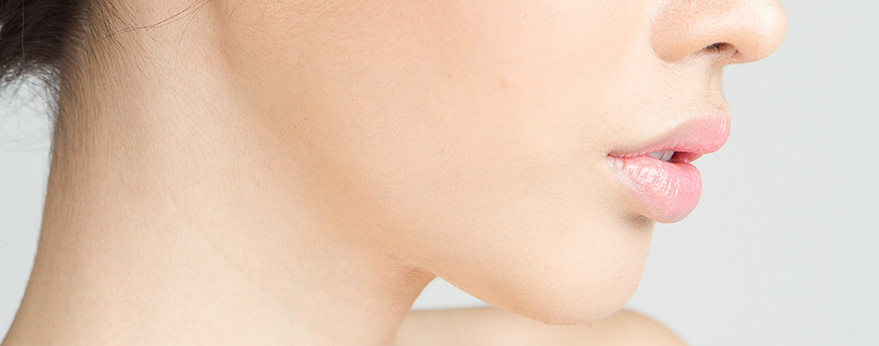
Cleft lip and palate is a congenital condition that occurs when the tissues forming the lip and/or the roof of the mouth (palate) do not fully fuse during fetal development. This results in a gap or opening in the lip and/or palate, which can vary in size and severity. Cleft lip and palate can affect a person’s appearance, speech, feeding, and dental health.
What Is Cleft Lip Palate?
Cleft lip and palate are birth defects that occur early in pregnancy when the tissues of the face fail to fuse properly. The severity of the condition can range from a small notch in the lip to a complete separation extending into the nose and palate. Cleft lip and palate can occur alone or together as part of a single condition.
A cleft lip refers to a gap or split in the upper lip, which may extend from the lip to the base of the nose. The cleft palate refers to a gap or opening in the roof of the mouth, which can affect the hard palate (the bony front portion) and/or the soft palate (the muscular back portion). These openings can cause feeding, speech development, and dental health difficulties.
What Are The Different Types Of Cleft Lip Palates?
Cleft Lip Only
Cleft Palate Only
Unilateral Cleft Lip
Bilateral Cleft Lip
Unilateral Cleft Palate
Unilateral cleft palate refers to an opening in one side of the palate, affecting either the hard palate, soft palate, or both. It may occur in conjunction with a unilateral cleft lip.
Bilateral Cleft Palate
Bilateral cleft palate involves openings on both sides of the palate, affecting either the hard palate, soft palate, or both. It may occur with or without a cleft lip.
The severity of cleft lip and palate can vary, ranging from a small notch to a complete separation of the lip and palate.
Treatment typically involves different approaches, including surgery, speech therapy, dental care, and ongoing medical management to address the condition’s physical, functional, and psychological aspects.
What Are The Causes And Risk Factors Of Cleft Lip Palate?
Genetics – Sometimes, clefts run in families, suggesting a genetic component.
Environmental Factors – Exposure to certain substances or infections during pregnancy, such as smoking, alcohol, or certain medications, can increase the risk.
Nutritional Deficiencies – Lack of proper nutrition, particularly folic acid, during pregnancy, may contribute to the development of clefts.
Other Medical Conditions – Certain syndromes or medical conditions, like Pierre Robin sequenc
What Are The Common Symptoms Of Cleft Lip Palate?
Visible Split or Gap – A cleft lip is often noticeable as a split or gap in the upper lip, extending to the nose.
Opening in the Roof of the Mouth – A cleft palate presents as an opening in the roof of the mouth, possibly extending from the front of the mouth to the back of the throat.
Nasal Deformities – Clefts can affect the shape and structure of the nose, leading to asymmetry or flattening.
Feeding Difficulties – Babies with cleft lip or palate may have trouble breastfeeding or bottle-feeding due to difficulty creating a proper seal.
Speech Issues – As children grow, they may experience speech difficulties, such as nasal speech or difficulty pronouncing certain sounds.
Diagnosing Cleft Lip and Palate
Prenatal Ultrasound – During routine prenatal care, an ultrasound may detect a cleft lip or palate in the fetus, although it’s not always definitive.
Physical Examination at Birth – A healthcare provider will examine the baby’s mouth and face shortly after birth. A visible cleft lip or palate is usually diagnosed at this time.
Further Evaluation – If a cleft lip or palate is suspected, additional tests such as a feeding evaluation or imaging tests like a CT scan or MRI may be recommended to assess the extent of the cleft and determine if other structures are affected.
Treating Cleft Lip and Palate
Surgical Repair – Surgical cleft lip repair is usually performed when the baby is a few months old, typically between 2 and 6 months of age. Cleft palate repair is usually done when the baby is older, around 9 to 18 months of age, to allow for proper palate growth.
Feeding Support—Babies with cleft lip and palate may have difficulty breastfeeding or bottle-feeding due to the gap in their mouths. Feeding specialists can guide proper feeding techniques and may recommend specialised bottles or nipples.
Dental Care – Children with cleft lip and palate may require ongoing dental care to address missing teeth, abnormal tooth development, or misalignment of the teeth and jaws.
Speech Therapy – Speech therapy is often needed to address difficulties that may arise due to the cleft affecting the muscles used for speech production.
Psychological Support—Living with a cleft lip and palate can have emotional and psychological implications. Counselling and support groups can help individuals and families cope with these challenges and develop strategies for building self-esteem and confidence.

